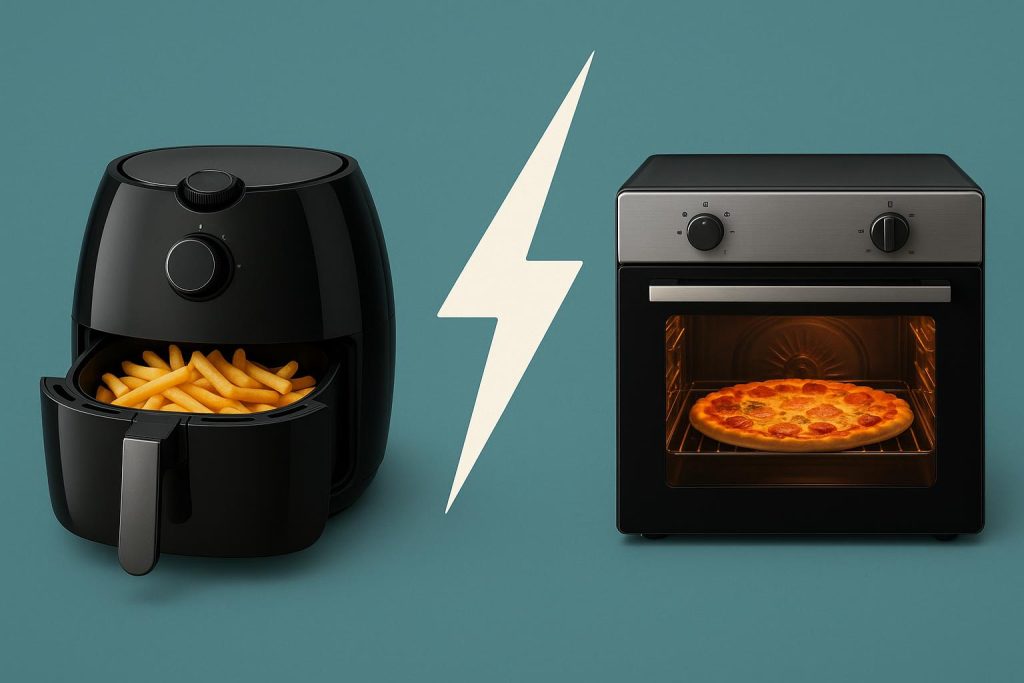When it comes to modern kitchen appliances, innovation is all about making our lives simpler and more efficient. One of the biggest debates in today’s culinary world revolves around the air fryer versus the traditional oven. Both appliances promise deliciously cooked meals, but which one really helps you save on energy bills? Let’s break it down and find out which device truly deserves the title of the most energy-efficient cooking companion in your kitchen.
Understanding How Each Appliance Works
Before comparing energy consumption, it’s important to understand how both appliances function. An air fryer uses rapid air circulation technology to cook food. It pushes hot air around the food at high speed, creating a crispy outer layer while using minimal oil. The compact design and efficient heating system mean that air fryers can reach high temperatures quickly.
A traditional oven, on the other hand, relies on heating elements to warm up a large interior space. While ovens can cook larger quantities of food, they take longer to preheat and maintain consistent temperature levels. This extended operation time directly impacts their energy use.
Difference Between an Airfryer and a Traditional Oven
Both the air fryer and the traditional oven are popular kitchen appliances designed to cook delicious meals, but they operate in distinctly different ways. Understanding the core differences helps you decide which appliance suits your cooking style, energy needs, and everyday convenience.
Let’s have a look at them.
Energy Efficiency
When comparing energy consumption, size and speed play major roles. An air fryer typically cooks food much faster, sometimes in half the time or less, compared to an oven. Because it’s smaller and uses concentrated heat, it consumes less power overall. For example, an air fryer might use around 1.5 kWh per hour, while an oven can consume up to 2.5 kWh or more for the same cooking duration.
Moreover, since air fryers preheat almost instantly, they eliminate the 10–15 minutes of energy loss that ovens often require before cooking begins. This combination of rapid heating and shorter cook times makes air fryers the more energy-efficient choice for smaller meals.
Cooking Capacity
While air fryers are great for quick meals, their compact baskets can limit how much food you can cook at once. If you’re preparing large family meals or baking multiple dishes, a traditional oven becomes more practical. Ovens can handle larger portions, bake multiple trays at once, and are better suited for roasts, cakes, and casseroles. Although they use more energy per session, their capacity means you can cook everything in one go, balancing out the total energy consumption for bigger meals. So, for everyday small-scale cooking, the air fryer wins on energy efficiency. But for family feasts, the traditional oven still holds value.
Preheating and Cooking Speed
One of the standout features of modern kitchen appliances like air fryers is how quickly they get started. Unlike ovens that need preheating, air fryers reach optimal temperature within seconds. That means no wasted energy while waiting for the appliance to warm up.
Cooking times are also shorter; fries, chicken wings, or vegetables that might take 30-40 minutes in an oven can be ready in just 15-20 minutes in an air fryer. The rapid air technology ensures even heat distribution, reducing the need for flipping or repositioning food during cooking. Faster cooking translates directly to lower energy use and more convenience for busy schedules.
Temperature Control and Heat Retention
Traditional ovens often lose heat when you open the door to check on your food, forcing the appliance to work harder to regain the set temperature. This results in additional energy consumption. Air fryers, however, are more contained. They don’t lose significant heat when opened, and their compact build allows them to maintain stable cooking temperatures with minimal fluctuation.
Most air fryers are also designed with automatic shut-off features and smart timers that prevent overcooking or unnecessary energy use. These small innovations make air fryers a standout in energy-efficient design among modern kitchen appliances.
Versatility and Functionality
Energy efficiency is important, but so is functionality. Traditional ovens can bake, roast, grill, and even dehydrate in some models, making them incredibly versatile. They’re perfect for recipes that require slow, even heat over a long duration. Air fryers, meanwhile, have come a long way from being just a “frying” gadget. Many models now come with roasting, baking, reheating, and grilling options. For most day-to-day needs, like toasting bread to crisping snacks, an air fryer does the job faster and more efficiently. However, if you’re cooking large quantities or need precise temperature control for baking delicate pastries, an oven still reigns supreme.
Maintenance and Cleaning
Keeping your kitchen appliances clean can also affect energy consumption. A dirty oven with residue buildup requires more energy to heat up evenly. Cleaning ovens can also be more time-consuming and often involves heating for a self-clean cycle, which consumes significant power.
Air fryers, in contrast, are easier to maintain. Their smaller baskets and non-stick surfaces can be cleaned quickly with minimal effort. Easier maintenance means your appliance stays efficient longer, reducing the overall energy footprint in the long run.
The Smarter Way to Cook
As modern homes evolve with smarter kitchen appliances, energy efficiency is becoming a top priority. The air fryer proves to be an excellent solution for those seeking quick, efficient, and low-energy cooking without compromising on taste or texture. Meanwhile, traditional ovens still have their place in culinary routines that demand scale and precision.
Ultimately, choosing between an air fryer and a traditional oven is more than energy savings. It adds convenience, sustainability, and makes every meal a tad bit smarter.




